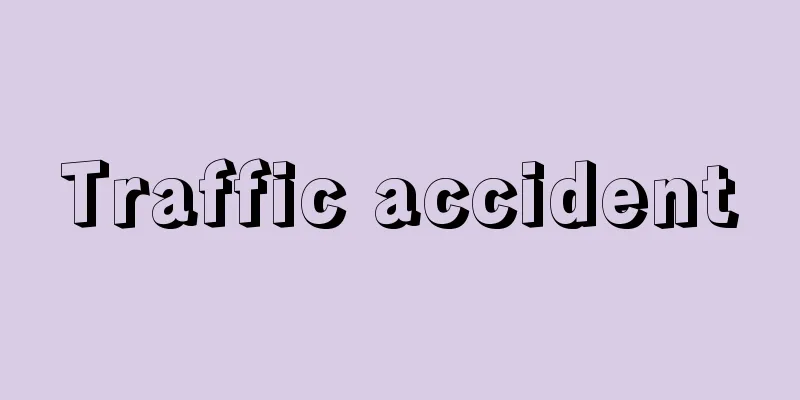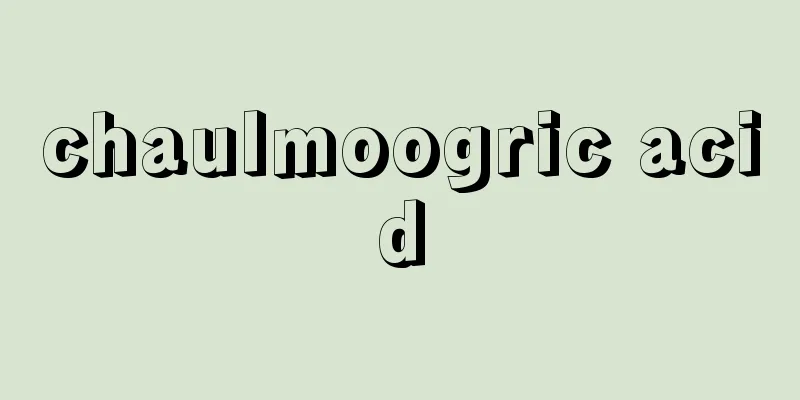Traffic accident

|
This refers to a situation where abnormalities occur due to various factors in the operation or operation of a means of transportation (such as automobiles, trains, ships, and aircraft), resulting in deaths and injuries and damage to property. Traffic accidents are broadly classified into road traffic accidents (car accidents), rail and tram traffic accidents (railroad accidents), maritime traffic accidents (marine accidents), and air traffic accidents (aircraft accidents) by means of transportation. Here is a comparison of traffic accident fatality statistics in Japan by type and by era. Road traffic accidents: 653,582 (1984), 1,059,403 (1999), 915,029 (2009), 584,544 (2017); rail and tram traffic accidents: 1,538 (1984), 689 (1999), 683 (2009), 561 (2017). Maritime traffic accidents (deaths and missing): 252 (1984), 146 (1999), 142 (2009), 54 (2017). Air traffic accidents (civilian aircraft only): 46 (1984), 26 (1999), 9 (2009), 28 (2017). These trends indicate that although the numbers are decreasing, there are still many fatalities and injuries from road traffic accidents. The increase in road traffic accidents is largely due to the rapid development of motorization and the increase in the number of automobiles during the period of high economic growth, as well as the increase in ownership due to falling automobile prices and rising income levels. Since the 1970s, transportation has become larger, more multifunctional, and faster, so that when an accident occurs, it is highly likely to become a major accident that takes a large number of lives and property at once. While the technological development of transportation has brought benefits to human society, it has also created a contradiction in that traffic accidents threaten the very foundations of people's lives, and this has become one of the "social anxieties" of modern times. Furthermore, traffic safety measures to prevent these accidents from happening are one of the important issues for transportation and traffic administration. [Mitsuyoshi Matsuo and Hideto Fujii] "Human Factors with a Focus on the Field of Aviation" by F.H. Hawkins, translated and supervised by Ishikawa Yoshimi (1992, Seizando Shoten)" ▽ "Aviation Accidents" revised and expanded edition by D. Gerow, translated by Shimizu Yasutoshi (1997, Icarus Publishing)" ▽ "Seeking to Prevent the Recurrence of Railway Accidents" edited by Abe Seiji and compiled by the Railway Safety Promotion Council (1998, Nihon Keizai Hyoronsha)" ▽ "Why Do Railway Accidents Occur?" by Yamanouchi Shuichiro (2000, Tokyo Shimbun Publishing Bureau)" ▽ "Traffic Accidents and PTSD" by Aoki Katsuji (2000, Bungeishunju/Asahi Bunko)" ▽ "Scientific Investigation of Traffic Accidents compiled by the Traffic Law Science Research Group (2001, Nihon Hyoronsha)" [References] | | | | | |Source: Shogakukan Encyclopedia Nipponica About Encyclopedia Nipponica Information | Legend |
|
交通手段(自動車、鉄道、船舶、航空機など)の運転・操縦においていろいろな要因により異常をきたし、人命の死傷、物の損害を引きおこす事態をいう。交通事故は、交通手段別に道路交通事故(自動車事故)、鉄軌道交通事故(鉄道事故)、海上交通事故(海難)、航空交通事故(航空事故)に大別される。日本における交通事故による死傷者統計を、種類ごとに年代を追って比較してみる。道路交通事故65万3582人(1984)、105万9403人(1999)、91万5029人(2009)、58万4544人(2017)。鉄軌道交通事故1538人(1984)、689人(1999)、683人(2009)、561人(2017)。海上交通事故(死者・行方不明者)252人(1984)、146人(1999)、142人(2009)、54人(2017)。航空交通事故(民間機のみ)46人(1984)、26人(1999)、9人(2009)、28人(2017)。これらの推移から、数は減っているものの依然として道路交通事故による死傷者が多いといえる。道路交通事故の増加は、高度経済成長期における急激なモータリゼーションの発達と自動車台数の増加、自動車価格の低下と所得水準の上昇による所有率増加などによるところが大きい。 1970年代以降、交通手段の大型化、多機能化、高速化が進んだことから、いったん事故が発生すると一挙に大量の人命や財貨を奪う大型事故となる可能性が高い。交通手段の技術的発展が人間社会に恩恵を与える反面、交通事故が国民生活の根底を脅かすという矛盾を生み、現代の「社会不安」の一つとなっている。また、これらの事故を未然に防止する交通安全対策が運輸・交通行政の重要な課題の一つとなっている。 [松尾光芳・藤井秀登] 『F・H・ホーキンズ著、石川好美監訳『ヒューマン・ファクター 航空の分野を中心として』(1992・成山堂書店)』▽『D・ゲロー著、清水保俊訳『航空事故』増改訂版(1997・イカロス出版)』▽『安部誠治監修、鉄道安全推進会議編『鉄道事故の再発防止を求めて』(1998・日本経済評論社)』▽『山之内秀一郎著『なぜ起こる鉄道事故』(2000・東京新聞出版局)』▽『青木勝治著『交通事故とPTSD』(2000・文芸社/朝日文庫)』▽『交通法科学研究会編『科学的交通事故調査』(2001・日本評論社)』 [参照項目] | | | | | |出典 小学館 日本大百科全書(ニッポニカ)日本大百科全書(ニッポニカ)について 情報 | 凡例 |
<<: Traffic signal - kotsuushingo
>>: Transportation advertising
Recommend
Toba [city] - Toba
A city in the northeast of Shima Peninsula, Mie Pr...
Ekaterinodar
…It was founded in 1793 by the Cossacks of the Ku...
Synoptic oceanography
...However, many people use the terms interchange...
Airtight Silo - Kimitsu Sairo
…Small semi-underground silos, common in Japan, a...
Septuagint - The Septuagint
Today, it is a collective term for the Greek tran...
Pista cristata (English spelling)
… The Loimia medusa is called Dobemushi in Fukuok...
Wolfenbuttel (English spelling)
...In the 13th century, the residents of the merc...
Bombay
A port city located on the former Bombay Island (n...
Orlando the Mad
This is an epic poem of chivalry consisting of 46 ...
Kyoto Insane Asylum
Japan's first public psychiatric hospital. In ...
F2 - F2
…Heterosis is also known as heterosis. When speci...
Chongqing
A city in the northeast of southwest China. It wa...
Kakuseikai - Kakuseikai
…His party affiliation changed from the Progressi...
Pseudo-sentences - Gimonjosho
In the Heian period, a person who studied poetry a...
Optical glass - kougakugarasu (English spelling) optical glass
Glass is a highly homogeneous material used in op...









